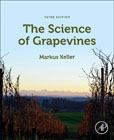
This completely revised and updated textbook is an introduction to the physical structure of the grapevine, its organs, their functions, and their interactions with the environment. Scientifically grounded and integrating discoveries in other plant species, it explores the physiological processes underlying grapevine form and function, their developmental and environmental control, and their implications for practical vineyard management. The book begins with a brief overview of the botanical classification, plant morphology and anatomy, and growth cycles of grapevines. It then covers the basic concepts in growth and development, water relations, photosynthesis and respiration, mineral uptake and utilization, and carbon partitioning. Then these concepts are put to use to understand plant-environment interactions including canopy dynamics, yield formation, and fruit composition. The book concludes with an introduction to stress physiology, including water and nutrient stresses, extreme temperatures, and the interaction with other organisms. This third edition reflects the latest insights into cultivar relationships, vascular transport, hormone action, and stress responses of grapevines. Based on the author's many years of teaching, research, and practical experience with grapevines and grape production, this book provides an important guide to understanding the entire plant. While many of the concepts discussed throughout the text are broadly applicable to plants in general and perennial plants more specifically, the focus is on grapevines, especially cultivated grapevines. This book enables readers to use these concepts in their own scientific research or practical production systems. Improve understanding of the impact of their management decisions and cultural practicesEnables prediction of the consequences of actions in the vineyard and the diagnosis and mitigation of potential problems before they threaten the sustainability of grape productionIncludes specific insights on canopy-environment interactions, yield formation, sources of variation in fruit composition, and environmental constraints will be particularly useful in this respect INDICE: 1. Botany and Anatomy2. Phenology and Growth Cycle3. Water Relations and Nutrient Uptake4. Photosynthesis and Respiration5. Partitioning of Assimilates6. Developmental Physiology7. Environmental Constraints and Stress Physiology8. Living with Other Organisms
- ISBN: 978-0-12-816365-8
- Editorial: Academic Press
- Encuadernacion: Rústica
- Páginas: 554
- Fecha Publicación: 21/01/2020
- Nº Volúmenes: 1
- Idioma: Inglés
